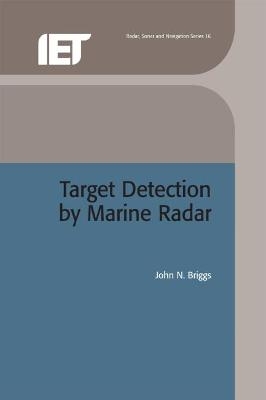
Target Detection by Marine Radar
Institution of Engineering and Technology (Verlag)
978-0-86341-359-9 (ISBN)
Radar is a legal necessity for the safe navigation of merchant ships, and within vessel traffic services is indispensable to the operation of major ports and harbours. Target Detection by Marine Radar concentrates solely on civil marine operations and explains how marine surveillance radars detect their targets. The book is fully illustrated and contains worked examples to help the reader understand the principles underlying radar operation and to quantify the importance of factors such as the technical features of specific equipment, the weather, target reflection properties, and the ability of the operator. The precision with which targets are positioned on the radar screen and with which their progress is tracked or predicted depends on how definitely they have been detected, therefore a whole chapter has been devoted to the issue of accuracy. The various international regulations governing marine radar are examined, a brief historical background is given to modern day practice and the book doses with a discussion of the ways in which marine radar may develop to meet future challenges.
John N. Briggs was employed by GEC-Marconi companies in Leicester, initially as a circuit-design engineer on continuous wave defence radar, microwave moisture meters and marine radar. For nearly 20 years he was in charge of design, trialing, manufacture and international marketing of civil marine aid to navigation racons. He also marketed instrumentation tracking radars and safety radars for gunnery and missile test ranges. Latterly, he acted as Technical Consultant on quasi-military coastal surveillance and civil vessel traffic services projects. Since retirement in 1994, John has continued marine radar related consultancy work for GEC-Marconi, the Maritime and Coastguard Agency, the Royal Ocean Racing Club, and the International Association of Lighthouse Authorities among others. John is a Companion of the Nautical Institute and has published a number of papers in the Journal of Navigation.
Chapter 1: Introduction
Chapter 2: The system and the transmitter
Chapter 3: Radar receiver
Chapter 4: Echo strength in free space
Chapter 5: Environmental effects on propagation
Chapter 6: Multipath of point targets
Chapter 7: Passive point targets
Chapter 8: Active targets
Chapter 9: Multipath factor of extended targets
Chapter 10: Extended target reflections; ships and coasts
Chapter 11: Noise, clutter and interference
Chapter 12: Detection
Chapter 13: Accuracy of position and track
Chapter 14: Spreadsheet calculations
Chapter 15: Worked examples
Chapter 16: Future possibilities
Appendices
| Reihe/Serie | Radar, Sonar and Navigation |
|---|---|
| Verlagsort | Stevenage |
| Sprache | englisch |
| Maße | 156 x 234 mm |
| Themenwelt | Technik ► Fahrzeugbau / Schiffbau |
| Technik ► Nachrichtentechnik | |
| ISBN-10 | 0-86341-359-5 / 0863413595 |
| ISBN-13 | 978-0-86341-359-9 / 9780863413599 |
| Zustand | Neuware |
| Haben Sie eine Frage zum Produkt? |
aus dem Bereich


